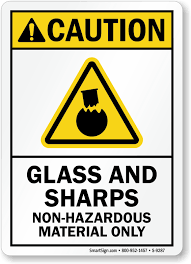WHERE DO HOSPITALS KEEP RADIOACTIVE WASTES?
3/10/2020

Hospitals generate large amounts of waste. It is estimated that, on average, each hospital generates between 0.5 and two kilograms of waste per patient each day. Part of this waste is hazardous because it contains radioactive material.
Where does radioactive waste come from?
Radioactive waste comes from the treatment and diagnostic procedures that make use of radioactive material. Such waste loses its radioactivity faster, and every hospital must have systems in place that ensure its safe disposal.
The Waste Storage
Most hospitals treat and dispose of radioactive waste offsite. In the case of onsite storage, the waste manager ensures that it is kept away from other waste and away from people and animals. Here are several radioactive waste storage used by hospitals:
Onsite Storage
Radioactive waste is stored within the hospital until its radiation levels go down before disposing of. The waste manager ensures the storage location is well ventilated and easy to access. The waste is stored in batches, and if it is infectious, it has to get disinfected before storage.
Treatment of Radioactive Waste
Radioactive waste loses its activity through decay. The decay period varies from a few hours to several years, depending on the type of isotope involved. The goal of waste treatment is to minimize the mobility of the radioactive components within the waste while reducing its volume.
Offsite Disposal
Low-level radioactive waste or LLW can be disposed of as soon as it is packaged since it is less harmful. The cost of disposing of radioactive hospital waste is always higher than that of disposing of ordinary waste. The waste is completely sealed before collection by waste disposal companies who bury it in landfill sites.
Dilute and Disperse
This process involves scattering the waste over a wide area to minimize its effects on the environment. This method is rarely used for fear of being questioned by local authorities.
